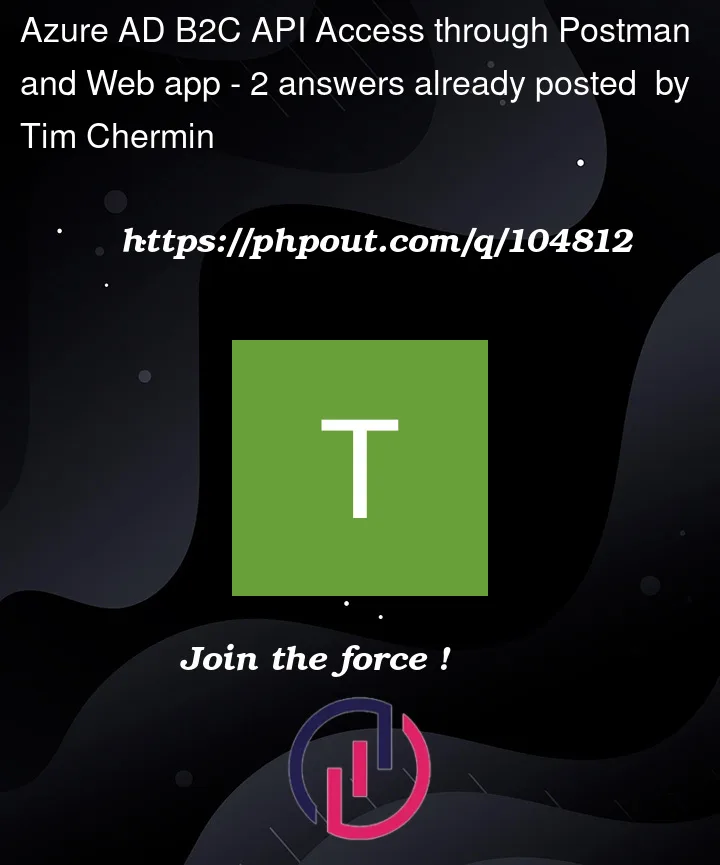As a follow-up on my question about how to setup a ROPC Flow. I want to access my API through the ROPC flow (currently using default user flows) and also through my web app which uses a custom policy on sign-in. This results in two different access tokens. On the left is access token received using the AcquireTokenSilent call and on the right is the access token received through postman with ROPC.
The custom policy token (on the left) gives an "Authorization has been denied for this request." error, while the token on the right is fine. I am assuming that the custom policy token does not work because it does not contain the tfp claim (and if it did, it would be a different one).
How can I set it up so that I can still use the ROPC flow while also using the custom policy? I would like to keep the current userjourney in the custom policy the same. Although if it is possible to somehow add ROPC as an option to it, then it would be fine.





2
Answers
So I finally found a way to do this in .NET Framework, if you want a solution for .NET Core you would sadly have to look somewhere else.
In your startup add the following.
Based on the description above, you are using two policy types – a user flow and a custom policy. And, you are attempting to get SSO between the two.
This is not a supported scenario. This is because the token uses different keys that signs the token.
If custom policies are required for your scenario, I suggest converting the user flow ROPC to a custom policy using this document https://learn.microsoft.com/en-us/azure/active-directory-b2c/add-ropc-policy?tabs=app-reg-ga&pivots=b2c-custom-policy